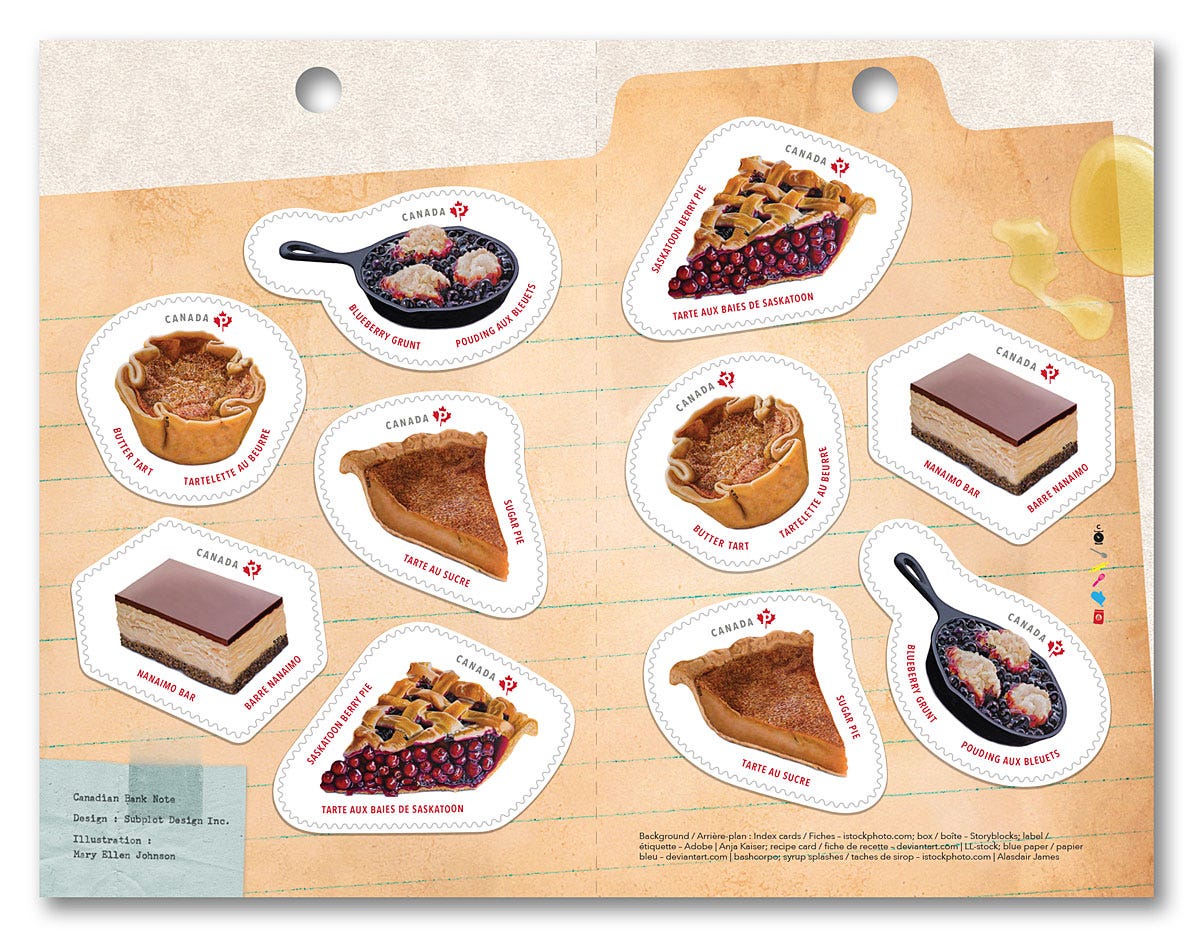
Canada Post released five stamps in a series called ‘Sweet Canada’ on April 17, 2019 that each feature a traditional regional Canadian dessert:
Sugar pie
Butter tart
Saskatoon berry pie
Nanaimo bar
Blueberry grunt
The following are descriptions (and links to recipes!) Yes, I’ve scoured the Internet for Reddit-approved i.e. tried and tested recipes.
Sugar pie
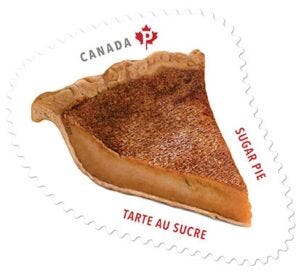
Sugar pie (tarte au sucre) traces its origins to France — nearly all of Québec’s earliest immigrants were peasant or artisan settlers who came from the west of France. Colonists brought the recipe for the pie along with them from France – but since brown sugar was a rare commodity in New France, early French-Canadian versions used maple syrup as a sweetener.
[Recipe from The Canadian Encyclopedia]
Butter tart
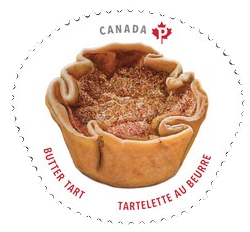
Described as “a real totem for Canadian cuisine”, a butter tart is defined by the Canadian Encyclopedia as:
a small pastry tart, which generally consists of butter, sugar, syrup, and egg, filled into a flaky pastry and baked until the filling is semi-solid with a crunchy top.
From way back in 1900, the Royal Victoria Hospital Women’s Auxiliary created a cookbook, with proceeds going to help build a new 13-bed hospital in downtown Barrie. Mary Ethel (Cowie) MacLeod (ca 1855-1915) contributed her recipe entitled ‘filling for tarts’ on page 88.

Royal Victoria Cook Book, 1900, pg. 88-89 [Source]
The small town of Midland, Ontario hosts the Best Butter Tart Festival every year. In 2019, they had 65,000 people in attendance and sold almost 200,000 butter tarts! There is also the Butter Tart Tour in the Kawarthas to celebrate this iconic food.
Saskatoon berry pie
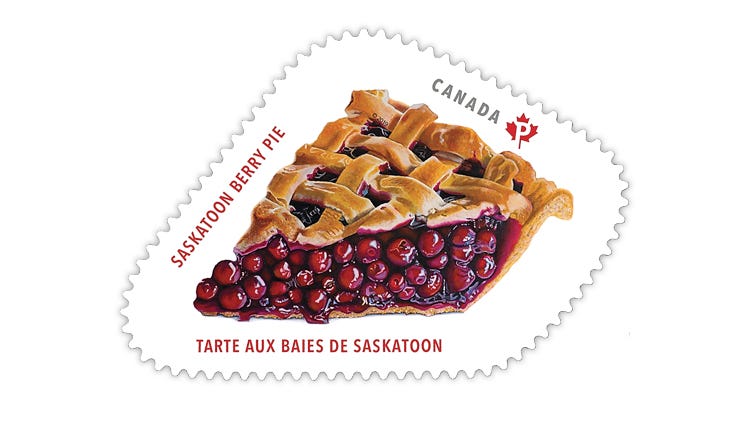
Sometimes called prairie berries or pigeon berries, the saskatoon berry (Amelanchier alnifolia) is a deciduous native shrub that grows from western Ontario to British Columbia and the Yukon. [Source] They look like blueberries except for the color and they have an earthy, nutty, almond-y flavor.
The ‘Saskatoon’ name is derived from the Cree word misâskwatômina, which also inspired the name of the prairie city of Saskatoon, meaning “at the Saskatoon berry.”
Saskatoon berry pie has the berries wrapped in flaky pastry.
[Recipe with step by step photos]
Nanaimo bar

British Columbia’s no-bake dessert bar is named after the city of Nanaimo, on Vancouver Island. It consists of three layers: a graham wafer crumb and shredded coconut base, custard-flavoured butter icing in the middle, and a layer of melted chocolate on top.
In 1986, the mayor of Nanaimo, in conjunction with a local mall, held a contest to find the ultimate Nanaimo Bar Recipe. ~100 different recipe variations of the dessert were submitted. In the end, Joyce Hardcastle was declared the winner and her recipe is featured on the city’s official website.
The city also has a map called the Nanaimo bar trail — a self-guided trail of the confection across 34 establishments in the city — which comes with an advisory to not attempt all of them in a single day.
Even McDonald’s Canada has a chocolate Nanaimo McFlurry:
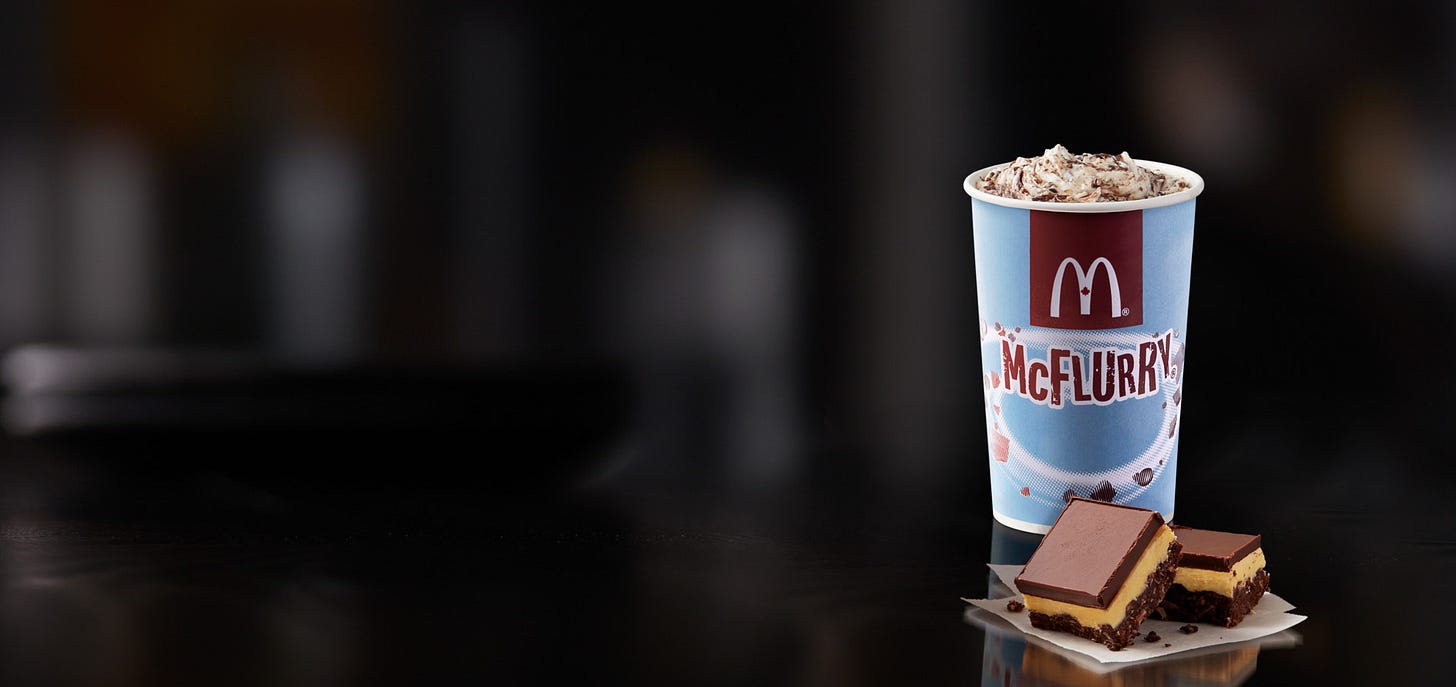
Source: McDonald’s Canada
When the stamp was released, CBC reported that people got upset over the ‘imposter square’ depicted in the stamp because the ratio of custard filling to crumbly base depicted is wrong. #theydidthemath The custard layer was also cited as too pale and should be more yellow.

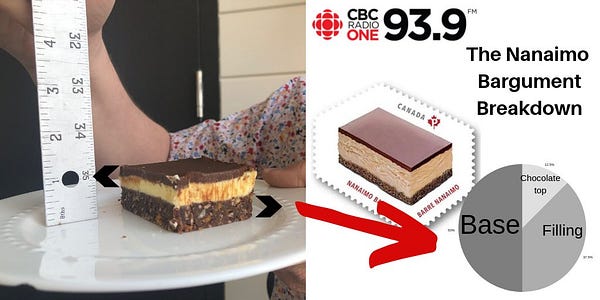
Blueberry grunt
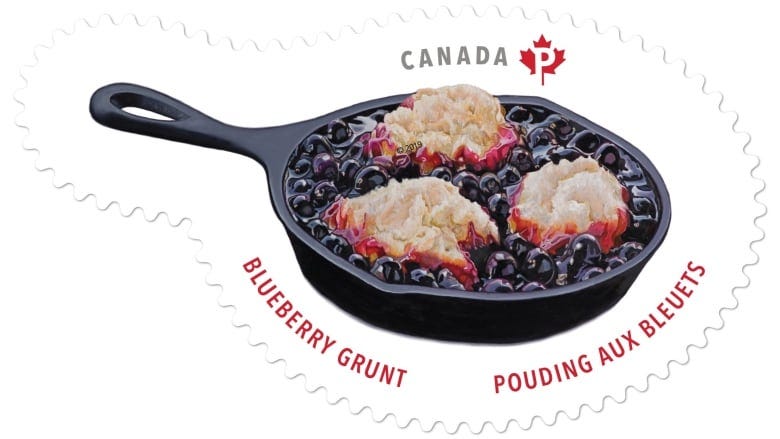
Merriam-Webster defines grunt as "a dessert made by dropping biscuit dough on top of boiling berries and steaming." A grunt is like a cobbler i.e. fruit on the bottom and biscuit dough on top, but made on the stovetop in a skillet as opposed to being baked.
Also (unflatteringly) called “slump” or “fungy,” blueberry grunt is a dessert of tea biscuit dumplings cooked in blueberries, typically served with ice cream or whipped cream.
Most common in Atlantic Canada, its origins are unclear — some claim it to be an early adaptation of an English steamed pudding by colonial settlers while other say it originated as Acadian “forage food”. The dessert gets its name from the sound it makes when the blueberries are being cooked.
[Recipe, complete with step-by-step photos]
References
Canada Post Corporation. “Sweet Canada.” Canada Post, https://www.canadapost.ca/web/en/blogs/collecting/details.page?article=2019/04/17/sweet_canada&cattype=collecting&cat=stamps.



